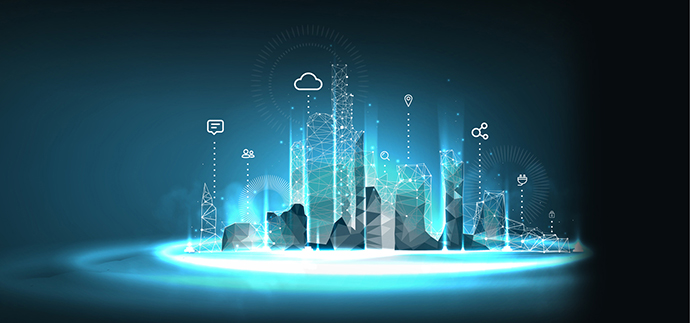
The Internet of Things (IoT) has the potential to improve our lives in a variety of ways, by making our homes, cities, and workplaces more efficient, convenient, and safe. Some examples of how IoT can improve our lives include:
Smart homes: IoT devices can be used to create a smart home, which can be controlled remotely and learn from the user’s behavior and preferences. For example, smart thermostats can automatically adjust the temperature based on the user’s schedule, and smart lighting can turn on and off automatically based on the user’s presence.
Improved energy efficiency: IoT devices can be used to monitor and control energy usage in homes and buildings, which can help to reduce energy costs and improve overall sustainability. For example, smart meters can be used to track energy usage in real-time and smart appliances can be controlled remotely to reduce energy consumption.
Better transportation: IoT platform can be used to improve traffic flow, reduce congestion, and make transportation safer. For example, smart traffic lights can adjust the timing based on real-time traffic data, and connected cars can communicate with other vehicles and infrastructure to improve safety and reduce congestion.
Everything You Need to Know About IoT
So, what is IoT? IoT is the network of physical objects that are embedded with sensors, software, and other technologies to enable them to collect and exchange data. These objects can be anything from a car to a refrigerator, and they can be connected to the internet to allow them to communicate with each other and with other devices.
The potential of IoT is vast. IoT can be used to automate and streamline processes, improve efficiency, and provide real-time insights into the performance of connected devices. IoT can also be used to monitor and control the environment, provide better customer service, and even create new business models.
What is an example of an Internet of Things device?
The Internet of Things (IoT) is a term used to describe the connection of physical objects to the internet. These objects, which can range from everyday items like light bulbs and coffee makers to more complex items like cars and medical devices, are equipped with sensors and other technology that allow them to transmit data over the internet.
An example of an IoT device is a connected security camera. These cameras are connected to the internet and can be monitored remotely from anywhere in the world. They can be used to monitor activity in and around a home or business, and can even be programmed to alert the user if there is any suspicious activity.
What is the history of the Internet of Things?
The concept of the Internet of Things has been around since the early 1990s, but it has only recently become a reality due to advances in technology. The term “Internet of Things” was first coined by Kevin Ashton in 1999. Ashton was a British technology pioneer who was working on a project to use radio frequency identification (RFID) to track objects in a supply chain. He realized that RFID could be used to track any object, not just inventory, and that it could be used to create a network of connected objects. This network of connected objects would be able to communicate with each other and share data.
Since then, the Internet of Things has grown exponentially. The introduction of wireless technologies such as WiFi and Bluetooth, as well as the development of low-power sensors and processors, have enabled the creation of an ever-growing number of connected devices.
How big is the Internet of Things?
The Internet of Things (IoT) is a rapidly growing network of connected devices that are able to communicate with each other and exchange data. It is estimated that by 2025, the number of connected devices will reach 75 billion. This means that the IoT will be much bigger than it is today. The IoT is used in a variety of applications, from smart homes to industrial automation. It is estimated that the IoT will be worth over $1 trillion by 2020. This means that the IoT will be an important part of the global economy.
The IoT is also becoming an important part of our daily lives. Smartphones, tablets, and other connected devices are becoming increasingly common. This means that more and more of our daily activities are being connected to the internet
You can always learn more about IoT and its solutions at www.isimplatform.io or contact us at info@isimplatform.io

No responses yet